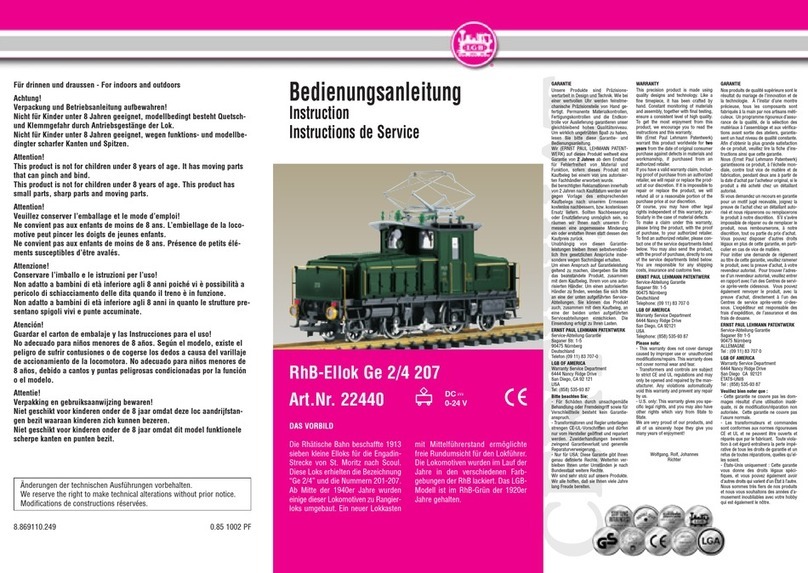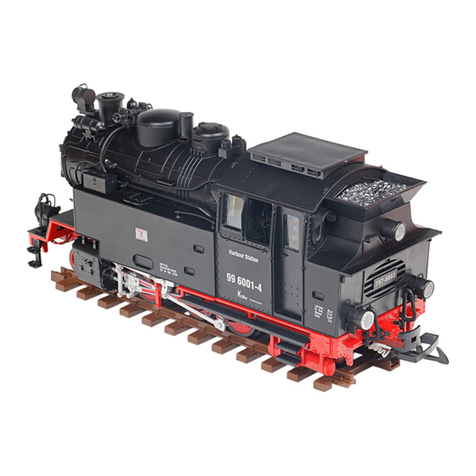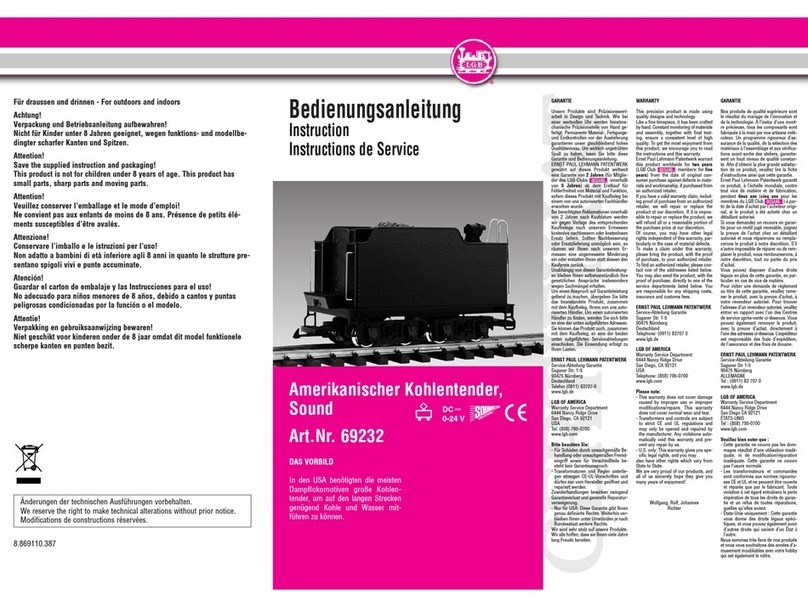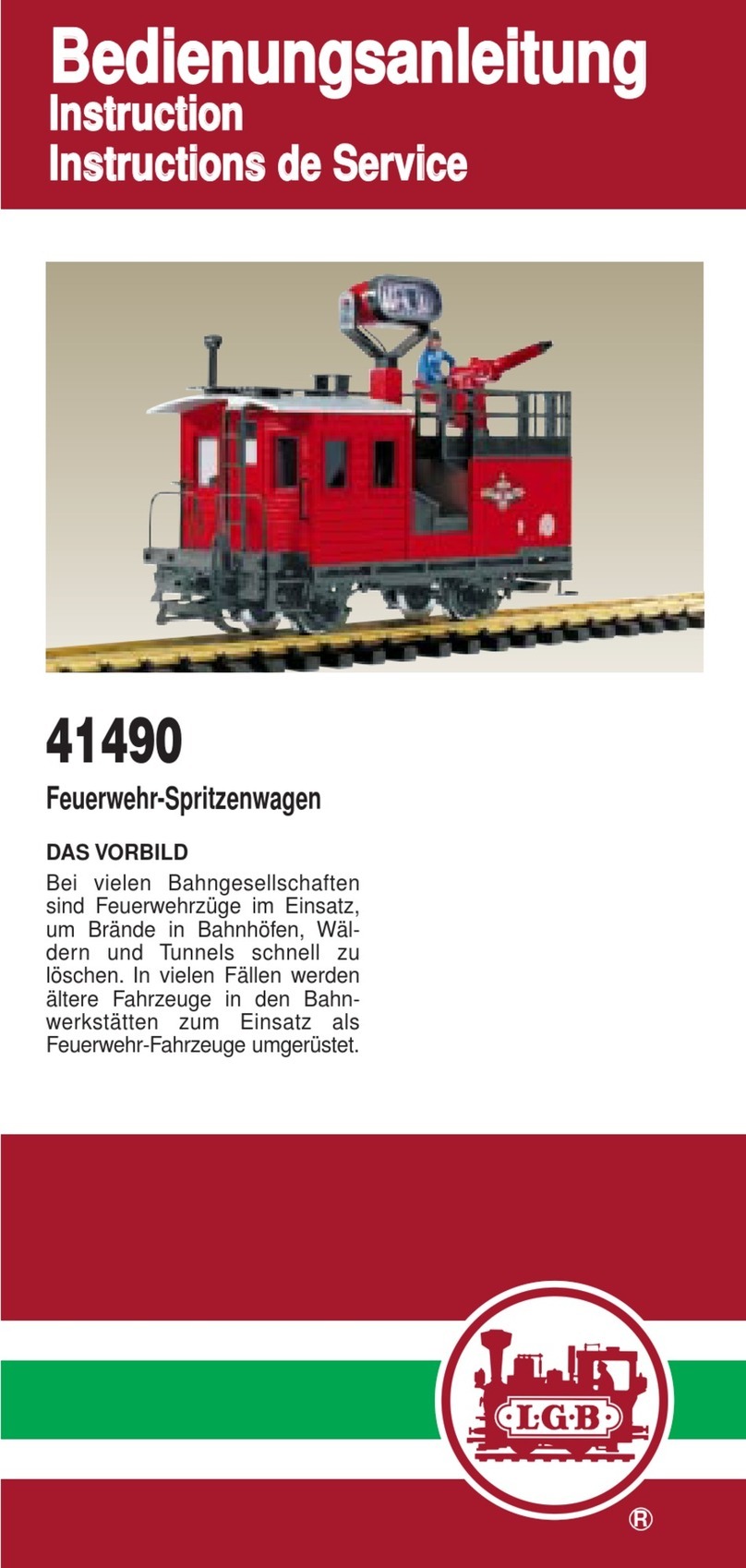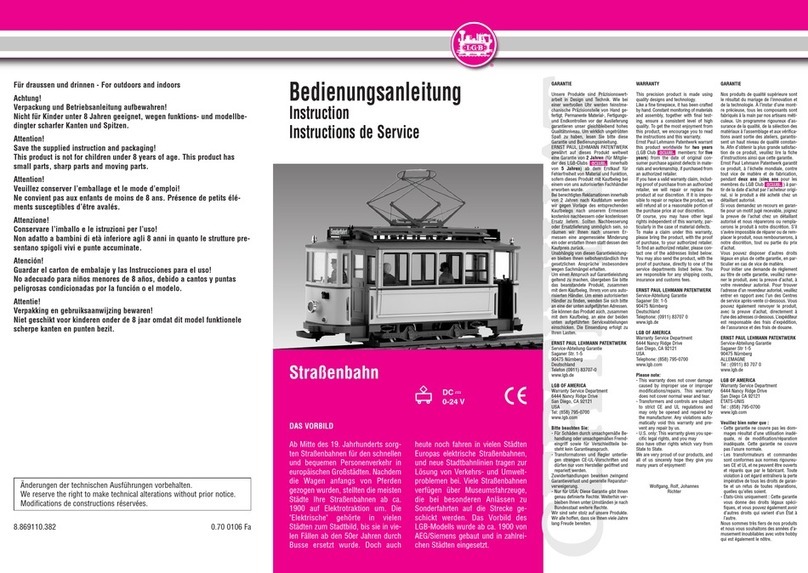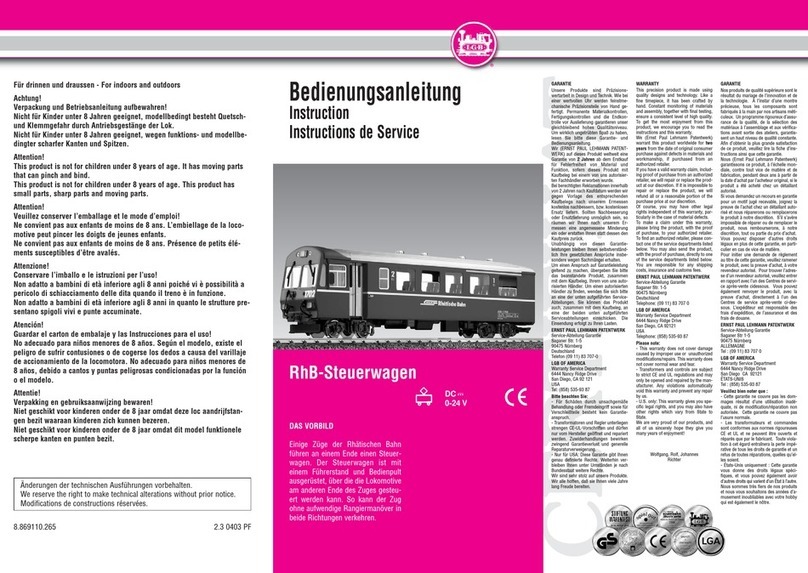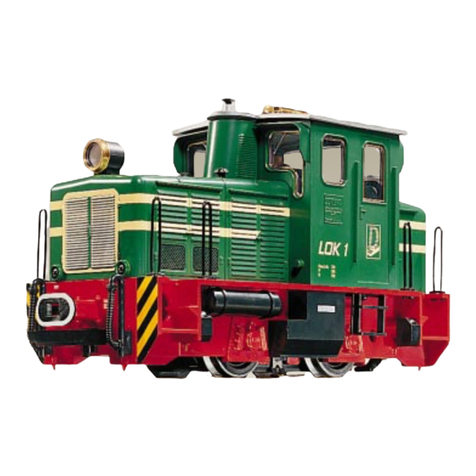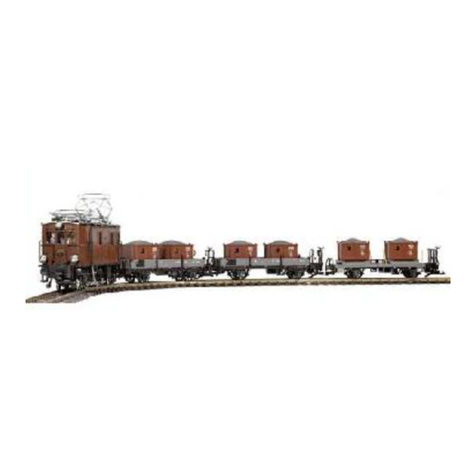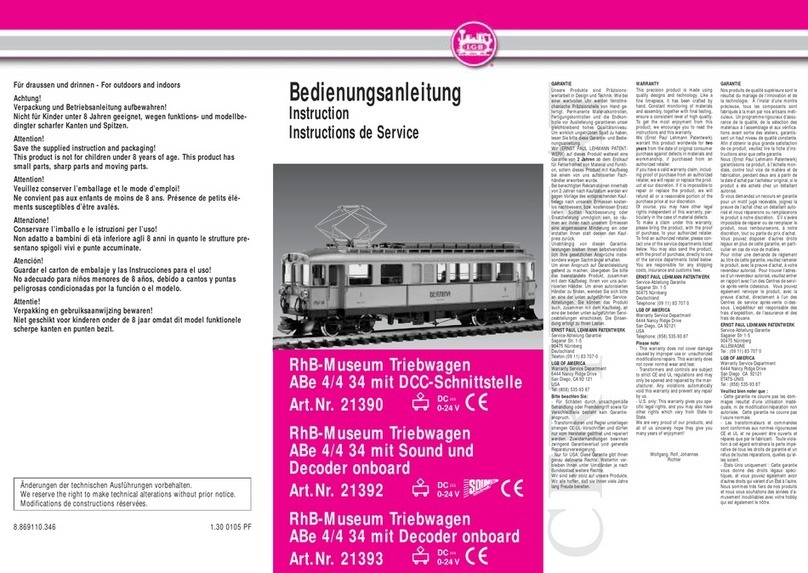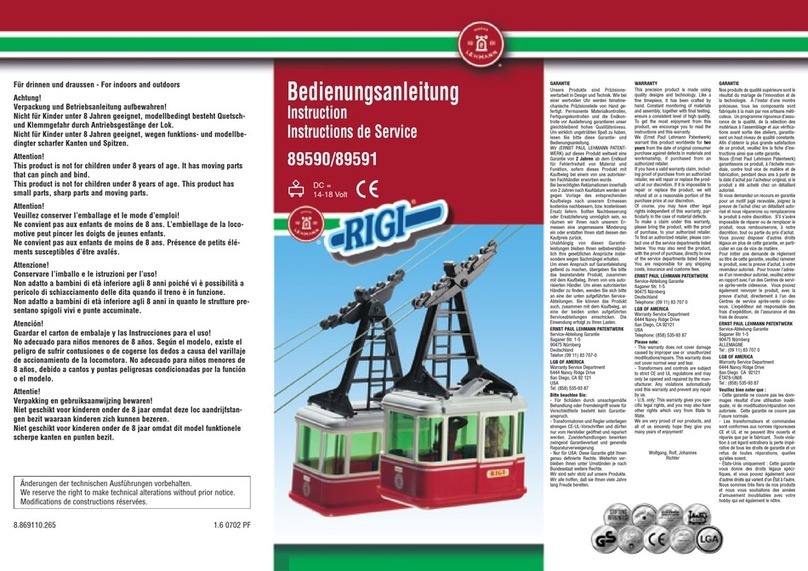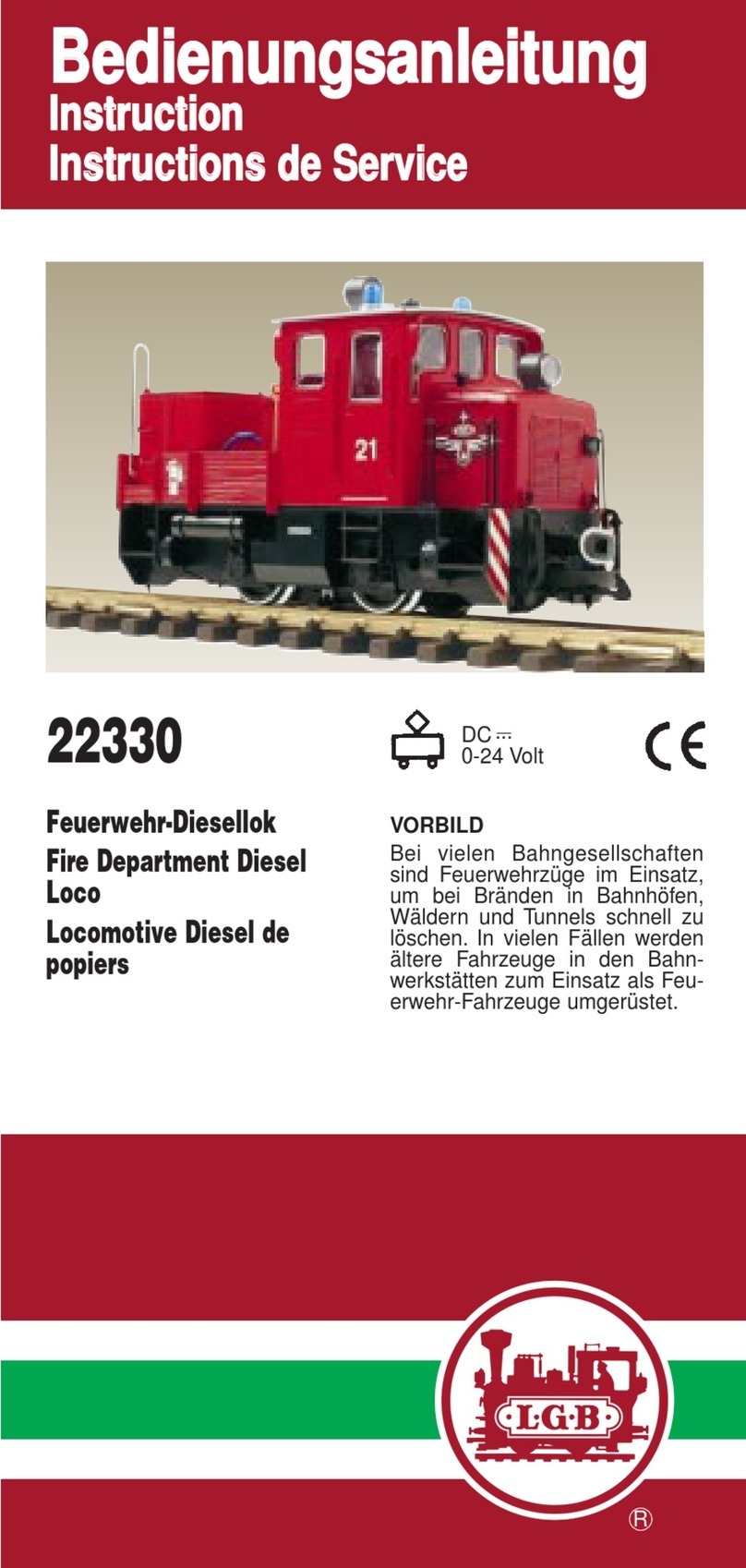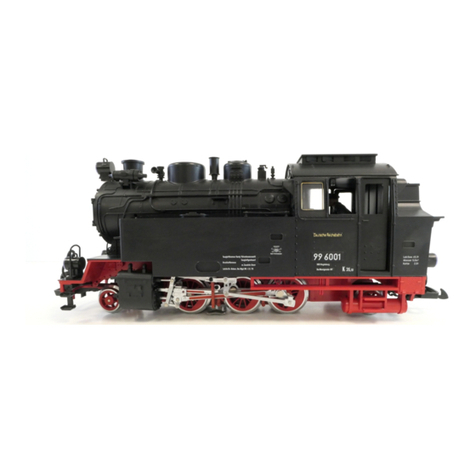
4
Sicherheitshinweise
• Das Modell darf nur mit einem dafür bestimmten
Betriebssystem eingesetzt werden.
• Nur Schaltnetzteile und Transformatoren verwenden,
die Ihrer örtlichen Netzspannung entsprechen.
• Das Modell darf nur aus einer Leistungsquelle versorgt werden.
• Beachten Sie unbedingt die Sicherheitshinweise in der Bedienungsanleitung zu
Ihrem Betriebssystem.
• Nicht für Kinder unter 15 Jahren.
• Verbaute LED`s entsprechen der Laserklasse 1 nach Norm EN 60825-1.
• ACHTUNG! Funktionsbedingte scharfe Kanten und Spitzen.
• ACHTUNG! Dieses Produkt enthält Magnete. Das Verschlucken von mehr als einem
Magneten kann unter Umständen tödlich wirken. Gegebenenfalls ist sofort ein Arzt
aufzusuchen.
Wichtige Hinweise
• Die Bedienungsanleitung ist Bestandteil des Produktes und muss deshalb aufbe-
wahrt sowie bei Weitergabe des Produktes mitgegeben werden.
• Gewährleistung und Garantie gemäß der beiliegenden Garantieurkunde.
• Für Reparaturen oder Ersatzteile wenden Sie sich bitte an Ihren LGB-Fachhändler.
• Entsorgung: www.maerklin.com/en/imprint.html
• Zum Betrieb verwenden Sie bitte ein Fahrgerät mit mindestens 5 A Fahrstrom. Im
Zahnstangenbetrieb wird der Leistungsbedarf entsprechend ansteigen.
Funktionen
• Das Modell ist für den Betrieb auf LGB-Zweileiter-Gleichstrom-Systemen mit
herkömmlichen LGB-Gleichstrom-Fahrpulten vorgesehen (DC, 0 – 24 V).
• Werkseitig eingebauter Multiprotokoll-Decoder (DC, DCC, mfx).
• Zum Einsatz mit dem LGB-Mehrzugsystem (DCC) ist das Modell auf Lokadresse 03
programmiert. Im Betrieb mit mfx wird die Lok automatisch erkannt.
• Mfx-Technologie für Mobile Station/Central Station.
Name ab Werk: HG 4-4 701
• Die Funktionen können nur parallel aufgerufen werden. Die seriealle Funktionsaus-
lösung ist nicht möglich (beachten Sie hierzu die Anleitung zu Ihrem Steuergerät).
• Für den Betrieb auf Radien > 600 mm können am dritten Radsatz die Bremsen
nachgerüstet werden (Bild 2).
• Wenn die Lok auf eine Zahnstange fährt, schaltet sich der Zahnradantrieb automa-
tisch zu.
Elektronischer Sound
Die Pfeife kann auch mit dem LGB-Sound-Schaltmagneten (17050) ausgelöst werden.
Der Schaltmagnet lässt sich zwischen die Schwellen der meisten LGB-Gleise klipsen.
Platzieren Sie den Magneten mit dem Logo auf der rechten bzw. linken Seite des
Gleises, um die Pfeife kurz / lang auszulösen, wenn die Lok diese Stelle überquert.
Rauchgenerator
In der Lok ist ein radsynchroner Rauchgenerator eingebaut. Wegen der hohen
Leistungsaufnahme kann er für den Analogbetrieb über einen Schalter ausgeschaltet
werden (Bild 1).
Das Rauchöl (Märklin 02421) wird über den Dampfschlot nachgefüllt (max. 10 ml
einfüllen). Wird die Lok mit gefülltem Dampfgenerator gekippt, so läuft das Dampföl
über einen Überlauf durch die Zylinder wieder aus.
Zahnradantrieb
• Zahnstangenbetrieb ist nur ab Gleisradien R2 möglich.
• Wenn die Lok auf eine Zahnstange fährt, schaltet sich der Zahnradantrieb automa-
tisch zu.
• Der Antrieb der Zahnräder kann über die Funktionen F10 und F11 manuell geschaltet
werden. Es können aber immer nur F10 oder F11 gleichzeitig eingeschaltet werden.
• Im Zahnstangenbetrieb darf die Lok nicht geschoben oder festgehalten werden.
• Im Zahnradbetrieb kann die Anzahl der Zylinderschläge des Betriebsgeräusches
mit der Funktion F25 halbiert werden.
• Die Fahrtrichtung darf nur bei stehender Lok umgeschaltet werden.
• Zwischen den Zahnstangen und dem nächsten Gleisbogen muss mindestens
30 cm gerades Gleis verlegt sein.
• Die fahrende Lok darf nicht festgehalte oder blockiert werden.
• Schnelle Geschwindigkeitsänderungen sollten vermieden werden.
Das Modell der Zahnradlok HG 4/4 ist weitestgehend dem Vorbild nachempfunden
und ohne große Kompromisse umgesetzt worden. Daher ist eine sorgfältig verlegte
Gleisanlage Voraussetzung für einen reibungslosen Betrieb der Lok. Unter Umstän-
den kann es auf der Dreiwegweiche 12360 bei abbiegender Fahrt- je nach Zustand
der Weiche – zu Beeinträchtigungen kommen. In diesen Fällen muss die beiliegende
Radlenkerergänzung in der Weiche montiert werden (siehe Seite 32). Weitere Radlen-
kerergänzungen können über den Märklin-Service bestellt werden.
Wegen der hohen Stromaufnahme der Lok sollte auf saubere Gleise/Räder geachtet
werden.
Allgemeiner Hinweis zur Vermeidung elektromagnetischer Störungen:
Um den bestimmungsgemäßen Betrieb zu gewährleisten, ist ein permanenter,
einwandfreier Rad-Schiene-Kontakt der Fahrzeuge erforderlich. Führen Sie keine
Veränderungen an stromführenden Teilen durch.







